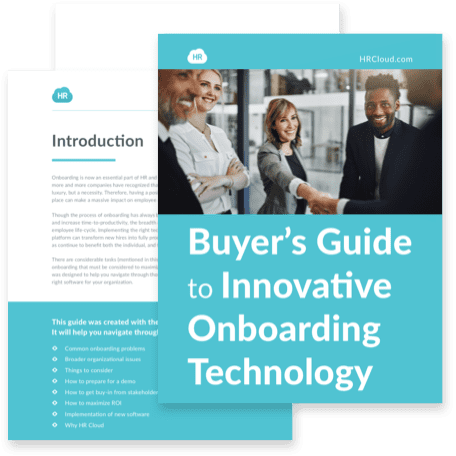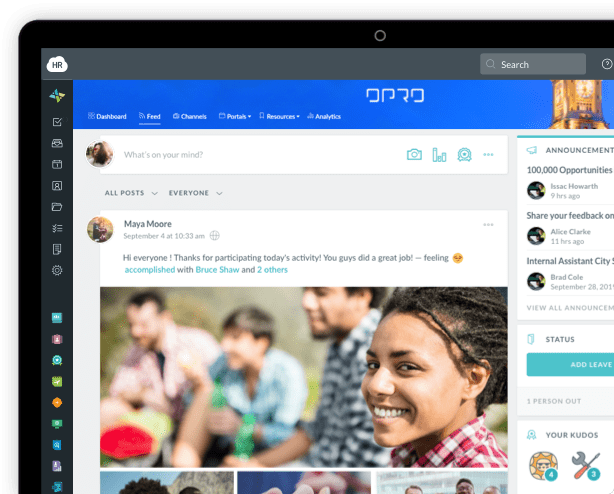6 Things To Consider When Choosing A Global Employee Recognition program

One of the sole responsibilities of the Human Resource department of any organization is to keep employees happy and implement strategies to make them loyal. Employee recognition and employee appreciation are more important in this competitive business environment than ever before!
Before we go more into the depth of the topic, do you know what an employee recognition platform is?
What is An Employee Recognition Program
An employee recognition platform is a process of recognizing the contribution of employees through monetary and non-monetary rewards. The intention is to encourage employees, increase productivity and employee loyalty.
Of course, no one would want to work in an organization where their efforts are not appreciated. An employee recognition program makes that the workers of any organization are valued. This is why many organizations have designed and implement employee recognition programs that aim to appreciate employees for their contribution to the success of the company.
Types of Employee Recognition Programs
Employee recognition program can be of two types:
-
A Formal Employee Recognition Program
-
An Informal Employee Recognition Program
A formal recognition program includes awards, increments, bonuses, gift cards, etc., while an informal recognition program can be either verbal or a letter of appreciation. Most of the organization uses a combination of both for the maximum output.

This guide was designed to help you navigate through those difficult tasks and help determine the right software for your organization, download our ebook now.
Download nowWhy Employee Recognition?
Why should companies invest hundreds of dollars in rewarding employees? The short answer is that a small amount of reward money pays back ten times in productivity. Time and again, research has shown that employee recognition is the best tool in HR's arsenal to motivate employees and increase productivity.
Here are some benefits of Employee Recognition for companies:
- Saves Money
Research shows that employees are twice as likely to quit within the year if their efforts are not appreciated by the company. We all know that recruitment is a capital-intensive process; a lot of money is spent on hiring the right candidate, and if that employee quits within one year, the money is wasted.
Employee recognition is a cost-effective tool that keeps employees from quitting prematurely. Even informal and non-monetary recognition has the power to keep employees motivated and loyal to the company for a longer duration.
- Higher Productivity
In the 21st century, employees are the best resource of a company. Every company has the same access to technology and supply chain. Employee ingenuity and dedication make the difference between good and great companies.
Here, employee recognition plays the essential role of keeping employees motivated to keep doing better and better each day. Studies show that effective recognition programs increase employee productivity by as much as 14%.
Moreover, employees are more likely to go the extra mile for their organization if they feel their efforts would be recognized and appreciated. Interestingly, employees are even motivated by negative feedback. Researchers at the Harvard Business Review found that feedback tells employees that their work is being recognized, even if it is critical. It is paramount in motivating them to do more.
- Increases Trust and Loyalty
Effective employee recognition programs increase the trust of your employees in the management. If their efforts are appreciated, employees are more likely to believe in company values and dedicate their time to achieving company goals.
Moreover, recognition also increases employee loyalty. Employees who are praised and rewarded for their hard work are less likely to leave the company. In this way, organizations get to keep valued resources.
The article focuses on 6 things to consider when choosing and implementing a global employee recognition platform.
These are:

Define the Employee Recognition Strategy
The first thing to consider when making an employee recognition program is to define a strategy. It is the need of time to recognize the employees, but HR also has to consider some other facts too as it comes with a few limitations.
-
They should communicate the impact of the growth of the business on the employees. The workforce should know how these employee recognition programs are helping the companies and employees both.
-
The next thing to consider is the guidelines that depend on the location and a few other things like eligibility criteria, the structure of the business, and frequency. These set guidelines make the employee recognition programs as transparent as they should be. There is no room left for confusion on both ends.
-
There should be fixed criteria for winning. It means that all the employees should know what the process of participation is and how a winner or employee of the month/week is selected; what are the basic criteria for selection?
-
Allocating a proper budget for the resources is the last thing to consider in a strategy. The resources include both financial and human resources.
Multiple Programs for Global Companies
When a business runs globally, it should understand that it is not necessary that a single employee recognition program would be successful for all the employees working from different regions. A global organization has a workforce worldwide, and they cannot be motivated by the same program.
One employee program that might work best for one set of employees might not work for the other one. Various employees from various regions are motivated by different programs because of the different cultures and different mindsets.
For instance, you may motivate your Muslim employees more by giving those breaks at their prayer times, while Christian employees will appreciate holidays on Christmas.
An organization should first consider the factors mentioned above and carry research before finalizing a program. What an organization can do in that case is to collaborate with the local organizations to motivate workers and distribute rewards.
Multilingualism
The language barrier is one of the most important things for an organization to consider when expanding globally and designing an employee recognition program. When employees and management have a language difference, the chances of errors and miscommunication are high, thus leading to less productive employees.
When designing global recognition programs, organizations should categorize them according to the languages. To implement a global employee recognition program, the introduction of a virtual platform is important.
The virtual platform should have a built-in language conversion feature that allows employees to switch to the language they find suitable. This structure also allows the HR personals to keep a record and monitor the performance of employees accordingly and give them incentives.
Additionally, you must ensure transparency in the global virtual platform, so all your employees from any geographical location trust the system. At times, employees may feel that they have been overlooked because the company prefers a certain location more than the others. Hence, transparency is key to avoid such misgivings.
SOLI
SOLI stands for Standard Of Living Index. It measures the living expenses of people. With global expansion, there comes a lot of confusion because of the workers working from different corners of the world. It means that when designing an employee recognition program, SOLI should be considered as the standard of living of the workers varies from region to region.
This is not workable for two employees working from two separate regions to receive the same amount of cash reward. For instance, an organization has two remote workings, A and B‒ the former lives in Japan, and the latter resides in Pakistan. Paying them both a reward of $ 400 would not be fair since they both have a different SOLI.
Your global employee recognition program should be fair and equitable. Hence, reward employees according to their standard of living. One important thing to note here is that you must make sure to mention that the difference in rewards is because of the SOLI framework, so employees do not feel they have been treated unfairly.
Gamification
Many studies show that gamification can also play a good part in motivating employees. It makes workers more engaged. There are many examples of gaming elements in the training and learning of employees.
Adding gaming elements to the employees' recognition programs can work wonders for your firm. You can appreciate the employees with scores and badges. Gamification is also virtual. The HR team should consider their employee recognition software to boost the right behavior.
Workforce Metrics
At last, when appreciating employees, it is important to consider the workforce metrics. It means that the same reward might not work for every worker. For instance, a reward for a 25 years old might not make the 55 years old employee happy.
The rewards should be designed such that it holds an equal position for everyone. It is important to consider the factors that motivate different age groups when designing employee recognition programs.
Final Thoughts
When expanding your business globally, it is one of the sole responsibilities of organizations to design and implement employee recognition programs to keep them happy and motivated. Recognizing your employees saves the company money, ensures high employee productivity, and maintains loyalty which can lead to competitive advantage.
Therefore, companies must maintain an effective employee recognition program to avail its benefits. Keep the points mentioned above when designing your global employee recognition program, and you won't fail!
About Author: Shaheryar provides ghostwriting and copywriting services. His educational background in the technical field and business studies helps him in tackling topics ranging from career and business productivity to web development and digital marketing. He occasionally writes articles for Muslim Pro

Keep Reading
Retention Reset: How to Keep Your Best Talent in 2025
More employees are walking away from their jobs in 2025 not just for better pay, but for
Remote Onboarding Done Right: A Step-by-Step Guide for HR Teams
Remote onboarding is the process of welcoming new employees who work from home or


